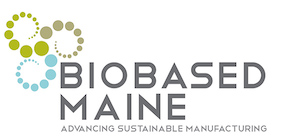Cellulose Nanotechnology on the Rise
According to this recent article in Industrial Biotechnology, global production of nanocellulose will increase substantially from now until 2020. Why such fast growth? Because cellulose, nature’s most abundant structural polymer, has limitless potential. When tiny particles of cellulose (called nano crystals or nano fibrils) are isolated from plants, you get nanocellulose. The potential applications for nanocellulose are exciting and diverse – composites, adhesives, food additives, foams, pharmaceuticals – which is why nanocellulose research, pilot- and industrial-scale facilities are cropping up in the U.S., Canada, Japan, France, and Scandinavia, to name a few.
In fact, we have a nanocellulose research facility and pilot plant right here in Maine at the University of Maine’s Process Development Center. This Center has led the research to help start up the nation’s first commercial nano cellulose manufacturing plant in Turner Falls, Massachusetts.
With the University of Maine’s world-class nanocellulose research facility and our abundant, sustainably-managed forests, Maine is well-positioned to be at the leading edge of this exciting market.
Read more here on how the federal government is prioritizing research on nanocellulose.
